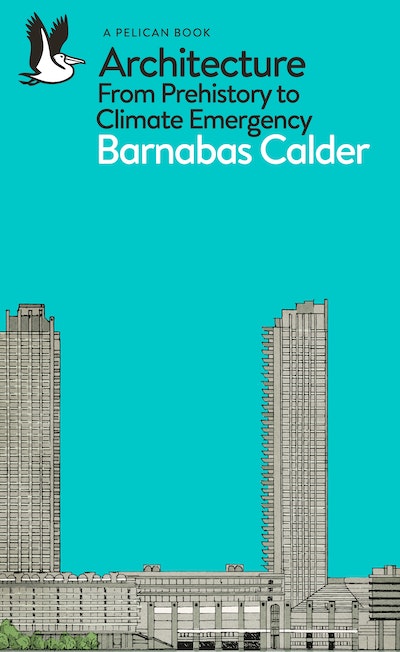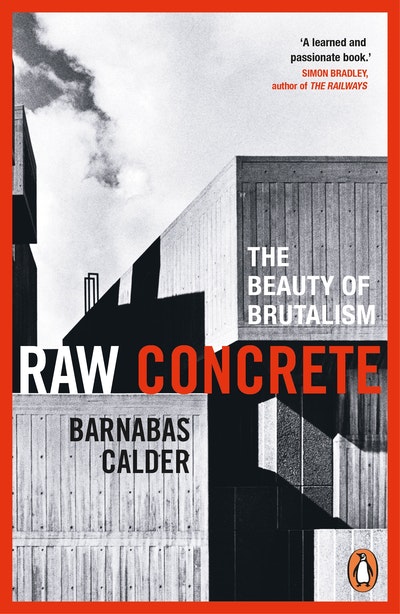- Published: 17 January 2023
- ISBN: 9780141978208
- Imprint: Penguin Press
- Format: Paperback
- Pages: 576
- RRP: $26.99
Architecture
From Prehistory to Climate Emergency
- Published: 17 January 2023
- ISBN: 9780141978208
- Imprint: Penguin Press
- Format: Paperback
- Pages: 576
- RRP: $26.99
A brilliantly written and timely investigation into a fundamental truth that is often overlooked: energy, in particular the availability of certain types of fuel, is perhaps the single most important driver of architectural design
Florian Urban, Professor of Architectural History, Glasgow School of Art
Brave and brilliant, Barnabas Calder's Architecture is a global history and a call to arms
William Whyte, Professor of Social and Architectural History, University of Oxford
Fierce and elegantly written, this book tells the "energy story of architecture" from the agrarian millennia onwards, as we hurtle towards the pending cataclysm. Read here of fossil fuel dependency, sometimes hidden and surprising, and wander the City of London, or, virtually, Shenzhen and repent. Barnabas Calder has written a fine alternative architectural history, with a venomous sting in its tail
Gillian Darley, author of Excellent Essex
Finally a book to replace Pevsner's standard history of architecture. Calder retells the story of architecture for the climate change generation. A dazzling tour of the history of architecture told through the lens of energy use
Dr. James W. P. Campbell, Head of Department of Architecture, University of Cambridge
With this fascinating deep dive into the energy economies behind buildings, from bone huts to the Barbican, Calder reframes the entire history of architecture for the age of climate emergency. Through this prism, our time of crisis suddenly makes so much sense
Joe Giddings, Architects Climate Action Network
A century-spanning, globe-spinning treatise on the thorny relationship between energy and architecture. This book will quickly turn you into an archi-geek
Bradley Garrett, author of Bunker
Calder's book presents architecture as an awe-inspiring history of technology, but is also a record of our exploitation of the earth's resources. In doing so it helps us form a new perspective on how we begin to produce a more regenerative approach to buildings and our planetary environment
Peter Clegg, Professor of Architecture, University of Bath and founding partner, FCB Studios
Barnabas Calder's excellent book makes the direct link between the evolution of architecture and society's access to energy. He shows that the ability to build, whether by grain fuelled humans, or fossil fuelled machinery, has determined the scale and nature of architecture across all cultures and all centuries. Within these insights into the past, lie the future solutions to building in a climate crisis. Architects designing for a zero carbon future should absorb these ideas
Simon Sturgis, Founder, Targeting Zero
[An] engaging study... It has something of the appeal of Jared Diamond's Guns, Germs and Steel - that of grounding historical mysteries in material facts... Partly a hymn or elegy to the world that fossil fuels made, partly a warning of the disasters they are bringing... Calder makes a simple and important point, often with engaging and unexpected detail: architecture is indeed made by energy, which makes crucial the next stage of its evolution
Rowan Moore, Observer
[An] imaginative and ambitious new history of architecture... Engaging throughout... It really is a must-read
Jeremy Williams, The Earthbound Report
A survey of construction and its entanglement with energy use... Superb
Financial Times
An insightful, often impassioned journey through the history of buildings
Simon Ings, New Scientist
Grand in scope... A splendid pause for thought
Alistair Fitchett, International Times
An essential read: clarifying, alarming, but hopeful
Architects' Journal
[A] powerful, disturbing account of architecture and energy since ancient times
Andrew Robinson, Nature
One of the most significant architectural publications in recent years... A fascinating history of architecture, a must-read for anyone interested in the relations between energy and architecture in history, and an important contribution to the discourse on energy in light of the climate emergency
The Drouth
Calder has written an energetic global history of architecture - energetic both in the vim he brings to a colossal subject, and in its particular focus... For the general reader, it's an entertaining and original introduction to the history of architecture. For the architect, it helpfully sets the daunting challenges of our day in lively and inspiring context
Will Wiles, RIBA
A highly readable world history of architecture... This book will help to reinforce the crucial role of architecture in tackling the climate crisis
Catherine Croft, RIBA Journal
Detailed and insightful
Nick Newman, RIBA Journal
Calder's brilliant book [...arises from] a truly astonishing depth and breadth of research [...and] develops a new frame for architectural writing which frankly makes some of the previous architectural histories look at best parochial, or at worst irrelevant in the face of the global climate crisis
Professor Jeremy Till, Buildings and Cities
Arguably the most important new contribution to the field of architectural history in decades
James Benedict Brown, Journal of Architecture
Provocative, enlightening... Calder is the perfect guide around some of mankind's most substantial achievements, but never swerves away from asking hard questions
Best Books of 2021, Herald
Groundbreaking
Philip Kennicott, Washington Post




